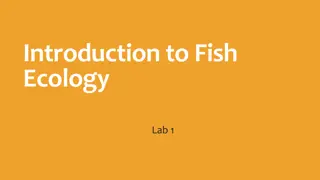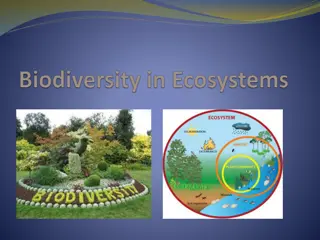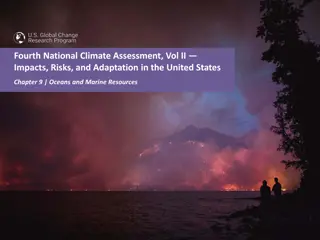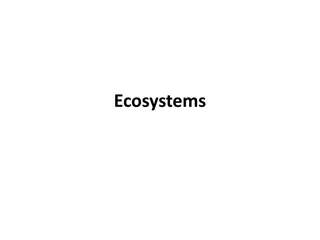Exploring the Major Types of Ecosystems
Explore the diverse world of ecosystems, including grassland, aquatic, forest, and desert ecosystems. Learn about the biotic and abiotic factors that shape these environments and the critical roles they play in supporting life. Delve into forest ecosystems with their canopy, floor, and soil features, and understand the functions they serve such as watershed protection and soil erosion control. Discover the unique characteristics of desert ecosystems, adapted to high temperatures and scarcity of water.
Download Presentation

Please find below an Image/Link to download the presentation.
The content on the website is provided AS IS for your information and personal use only. It may not be sold, licensed, or shared on other websites without obtaining consent from the author. Download presentation by click this link. If you encounter any issues during the download, it is possible that the publisher has removed the file from their server.
E N D
Presentation Transcript
Types of ecosystem Presented by, Priyanka Chowksey DAIMSR
Contents Ecosystem Major four types Grassland Ecosystem Aquatic Ecosystem Forest Ecosystem Desert Ecosystem
Ecosystem An ecosystem is a biological environment consisting of all the living organisms or Biotic component, in a particular area, and the nonliving, or Abiotic component such as air, soil, water and sunlight with which the organisms interact
ECOSYSTEM BIOTIC ABIOTIC FACTORS FACTORS
Biotic Sunlight Tempreture Precipitatio Water or Moisture Soil or Chemical content Abiotic Primary producer Hervivorus Carniorous Omnivorus Detritivorous
Types of Ecosystem Natural Artificial Grass land Forest Desert Aquatic Terres -trial Micro -bial Aquatic
Forest Ecosystem High rainfall Large number of organism and flora Highly diverse population Stability of ecosystem is very sensitive
Types of Forest Tropical evergreen forest Tropical deciduous forest Temperate evergreen forest Temperate deciduous forest Taiga
Features of Forest Ecosystem Forest canopy Forest floor Forest soil
Funtion of forest ecosystem Watershed Protection Atmospheric regulation Soil Erosion Control Wind Erosion Control
Desert Ecosystem High temperature, intense sunlight and low water Flora and fauna are very poorly developed and scarce Organisms are xeric adaptive Scarely populated
Types of desert Sand desert Stony desert Rock desert Plateau desert Mountain desert Cold desert
Features of desert ecosystem Rainfall Temperature Soil light Plants and animals are adapted to live in extremities
Funtion of desert ecosystem Solar energy resource Mineral resource
Grassland Ecosystem Marginal rainfall Vegetation is dominated by grasses Unimproved wild-plant communities Densely populated
Types of Grassland Ecosystem Tropical grassland Temperate grassland Others
Features of grassland ecosystem Temperature Precipitation Humidity Topography Unadaptive plants and animals
Funtion of grassland ecosystem Grassland provide food Grasslands Are Breeding Areas Human habitat
Aquatic Ecosystem Low temperature and sunlight Soil and vegitation is submerged Flora and fauna had adapted Densely populated.
Types of Aquatic ecosystem Ocean Lotic Lentic Wetland
Features of aquatic ecosystem Light and temperature Current Chemistry Competitive organism
Funtion of Aquatic Ecosystem Recycles nutrients Purify water Resposible for proper rainfall Attenuate floods Recharge ground water























